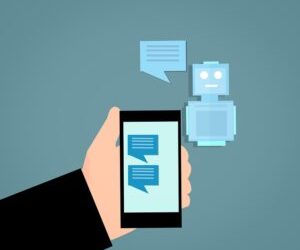
What health IT trends should reporters look out for in 2023? I spoke with Colin Hung, chief marketing officer and editor of Healthcare IT Today, for insight.
This year, look for hospitals to roll out the red carpet in efforts to woo patients back into their physical spaces, and a rightsizing of telehealth, Hung said. His comments may spur additional story ideas for journalists.
Trends to watch include:
Hospitals investing in patient-facing technologies to get them in the door. Patients have not fully returned to their health care providers at pre-pandemic levels for a variety of reasons including fear of catching COVID-19 and financial concerns. But hospitals and health systems want people to come back and need the revenue, and people need care.
Hospitals are “putting a lot more effort into making it very, very easy for people to come back or make an appointment,” Hung said. This includes investing in technologies that help patients book appointments based on location and get more appropriately matched with the type of provider they would like to see, in terms of gender, ethnicity or other features.
Growth in remote patient monitoring and hospital-at-home programs. It’s safer for patients to recover from illnesses or procedures at home than in the hospital, especially with current staffing shortages, Hung said. But patients recovering at home do need to be monitored.
Many hospitals are teaming up with remote patient monitoring vendors who not only supply the technology but the services that go alongside it, Hung said. Companies help patients set up the technologies, connect them to Wi-Fi and ensure that appropriate data measured by the devices is sent directly to electronic medical records.
Hospital rooms containing more connected devices. “Smart hospitals” loaded with technology for patient care and convenience, as I wrote about in a story post last year, are part of a larger trend around the internet of medical things, Hung said. Patient rooms will have more connected devices including the TV, bed, infusion pump, IV pole, lights, thermostat and more that can be controlled centrally at the nursing desk or with voice commands in the rooms. Most important will be devices to monitor the patient, like bed sensors that will track if a patient has gotten up or rotated, or if any pressure sores are developing. That information will be fed to central systems and electronic health records. Also, look for items like wrist monitors and wireless EKG monitors.
And hospitals are acknowledging that patients need a way to stay connected to their loved ones, through enhanced WIFI for personal cell phones or video technologies, he said.
Rightsizing of telehealth. Telehealth usage has dropped off its peak, and even though the federal government extended Medicare reimbursement of telehealth through the end of 2023, some patients are eager to get back into doctors’ offices and some doctors want their patients back in person, Hung said.
“I’m not sure the virtual thing has really worked out for every single type of care,” he said. “We’ve actually gotten smarter with the use of telehealth. Before it was the only alternative. Now we’re seeing where telehealth really is adding value and making a difference.” In other areas, usage is declining.
Doctors also have become accustomed to the technology such that if they are just seeing a patient for a prescription renewal or monitoring them during recovery after routine surgery, they may still opt for telehealth.
Incorporation of artificial intelligence programs in workflows and administrative tasks. Workflow-related AI is “definitely going to see a big boom in 2023,” Hung said. For example, an AI program for radiology may flag images that might contain a tumor, so a radiologist’s review of those scans gets prioritized.
“A lot of AI tools that help doctors eliminate unnecessary steps in the workflow are going to be very hot, given the labor shortages that we’re experiencing,” he said. This includes AI usage for areas like billing, claims and scheduling.
However, AI at this point may not yet be ready for clinical diagnostics, Hung cautioned: “I really don’t think we’ve crossed that bridge yet where we’re going to allow AI to make diagnoses for us, but some AI assistance is going to be OK.”
Potential increase in digital therapeutics. This is a “huge exploding industry, especially for behavioral health,” Hung said of the technologies, and therapeutic interventions prescribed by a health care provider that use software, mobile apps or other technologies to complement the treatment of a disease or condition.
However, he cautioned, “There’s not enough data for me to know, is this going to be a thing for the next decade? Or something like telehealth, where we know it works in certain zones. There’s just so many of them popping up right now.” We will definitely see growth in 2023, but whether or not we see effectiveness remains to be seen, he said.
Continuation of cybersecurity incidents. Unfortunately, 2023 is likely to bring more breaches for two reasons, Hung said: Hospitals are soft targets, and often represent life-and-death situations. Therefore, they are more likely to at least think of paying a ransom. And thanks to news reports, “everyone out there knows that hospitals have not spent enough in this area,” he said.
In 2023, health systems are likely to further invest in cybersecurity, not just in making sure medical centers have the right firewalls but also in processes to ensure the latest security patches are downloaded for devices, maintaining inventory of devices, and ensuring backup and recovery processes are in place.
Additional resources
- 2023 Healthcare IT Predictions – a podcast episode where Hung and John Lynn, founder and chief editor at Healthcare IT Today, discuss their predictions for this year
- 2023 Health IT Predictions – a roundup of health IT predictions from Healthcare IT Today in areas such as telehealth, health equity and security and risk









